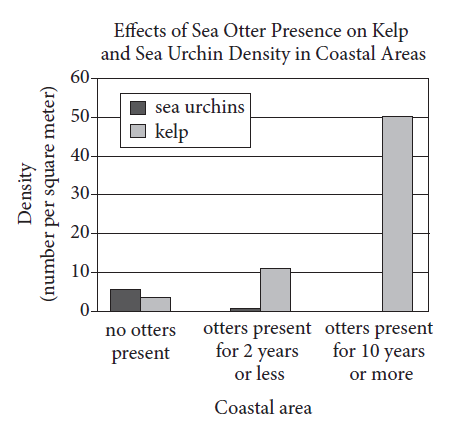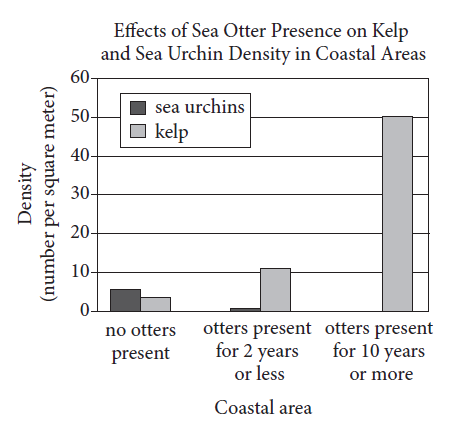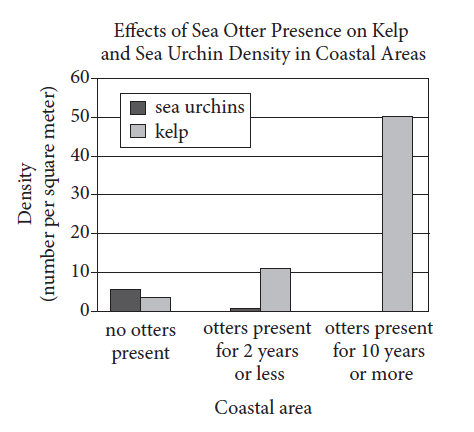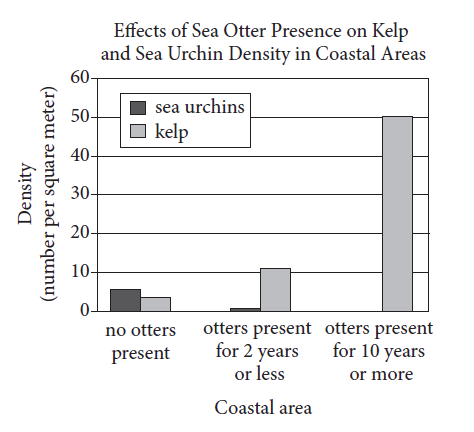Certain amount of washing soda crystals are exposed to atmosphere, a loss in weight was noticed. How can you account for this ?
Step-by-Step Solution:
1. Identify the Compound: The compound in question is washing soda, which is chemically known as sodium carbonate (Na2CO3). It exists as a crystalline solid with water of crystallization.
2. Understand Water of Crystallization: Washing soda crystals contain 10 molecules of water (10H2O) per formula unit of sodium carbonate. This water is integral to the structure of the crystal and is referred to as water of crystallization.
3. Exposure to Atmosphere: When washing soda crystals are exposed to the atmosphere, they come into contact with air, which can lead to changes in their physical state.
4. Loss of Water: The water of crystallization (10H2O) is volatile and can evaporate when the crystals are left in open air. This process results in the loss of water molecules from the crystal structure.
5. Efflorescence: The phenomenon of losing water of crystallization when exposed to air is known as efflorescence. As the water evaporates, the solid structure of washing soda changes, and only sodium carbonate remains.
6. Weight Loss: Since the original weight of the washing soda crystals included the weight of the water of crystallization, the loss of this water leads to a decrease in the overall weight of the compound. Thus, the observed loss in weight can be attributed to the evaporation of the water molecules.
Final Conclusion: The loss in weight of washing soda crystals when exposed to the atmosphere is due to the efflorescence process, where water of crystallization evaporates, leaving behind only sodium carbonate.
---
Topper's Solved these Questions
Similar Questions
State what would you observe when :
Washing soda crystals are exposed to the atmosphere.
View SolutionClassify Sodium chloride (NaCl), Fe, conc. H2SO4 sodium carbonate crystals based on the following characteristics when exposed to atmosphere (i) Gain in mass (ii) Loss in mass (iii) No change in mass on exposure to atmosphere
View Solution
Knowledge Check
Environmentalist Otters
It has long been known that the sea otters (23) living along the West Coast of North America help––––––––––––––––––––––––––––––––––––––––––––––––––––––– keep kelp forests in their habitat healthy and vital. They do this by feeding on sea urchins and other herbivorous invertebrates that graze voraciously on kelp. With sea otters to keep the population of sea urchins in check, kelp forests can flourish. In fact, (24) two years or less of sea otters can completely eliminate sea urchins––––––––––––––––––––––––––––––––––––––––––––––––––––––––––––––––––––––– in a coastal area (see chart).

Adapted from David O. Duggins, “Kelp Beds and Sea Otters: An Experimental Approach.” ©1980 by the Ecological Society of America.
Without sea otters present, (25) nevertheless–––––––––––––, kelp forests run the danger of becoming barren stretches of coastal wasteland known as urchin barrens.
[1] What was less well-known, until recently at least, was how this relationship among sea otters, sea urchins, and kelp forests might help fight global warming. [2] The amount of carbon dioxide in the atmosphere has increased 40 percent (26) . [3] A recent study by two professors at the University of California, Santa Cruz, Chris Wilmers and James Estes, (27) suggests, that––––––––––––––– kelp forests protected by sea otters can absorb as much as twelve times the amount of carbon dioxide from the atmosphere as those where sea urchins are allowed to (28) devour–––––––– the kelp. [4] Like (29) their––––– terrestrial plant cousins, kelp removes carbon dioxide from the atmosphere, turning it into sugar fuel through photosynthesis, and releases oxygen back into the air.
[5] Scientists knew this but did not recognize (30) how large a role they played–––––––––––––––––––––––––––––– in helping kelp forests to significantly decrease the amount of carbon dioxide in the atmosphere. [6] Far from making no difference to the ecosystem, the presence of otters was found to increase the carbon storage of kelp forests by 4.4 to 8.7 megatons annually, offsetting the amount of carbon dioxide emitted by three million to six million passenger cars each year. (31)
Wilmers and Estes caution, however, that (32) having more otters––––––––––––––––––––– will not automatically solve the problem of higher levels of carbon dioxide in the air. But they suggest that the presence of otters provides a good model of how carbon can be sequestered, (33) or removed, from––––––––––––––––––– the atmosphere through the management of animal populations. If ecologists can better understand what kinds of impacts animals might have on the environment, Wilmers contends, “there might be opportunities for win-win conservation scenarios, whereby animal species are protected or enhanced, and carbon gets sequestered.”ANO CHANGEBliving along the West Coast of North America, they helpCthat live along the West Coast of North America and help toDthat live along the West Coast of North America, where they helpEnvironmentalist Otters
It has long been known that the sea otters (23) living along the West Coast of North America help––––––––––––––––––––––––––––––––––––––––––––––––––––––– keep kelp forests in their habitat healthy and vital. They do this by feeding on sea urchins and other herbivorous invertebrates that graze voraciously on kelp. With sea otters to keep the population of sea urchins in check, kelp forests can flourish. In fact, (24) two years or less of sea otters can completely eliminate sea urchins––––––––––––––––––––––––––––––––––––––––––––––––––––––––––––––––––––––– in a coastal area (see chart).

Adapted from David O. Duggins, “Kelp Beds and Sea Otters: An Experimental Approach.” ©1980 by the Ecological Society of America.
Without sea otters present, (25) nevertheless–––––––––––––, kelp forests run the danger of becoming barren stretches of coastal wasteland known as urchin barrens.
[1] What was less well-known, until recently at least, was how this relationship among sea otters, sea urchins, and kelp forests might help fight global warming. [2] The amount of carbon dioxide in the atmosphere has increased 40 percent (26) . [3] A recent study by two professors at the University of California, Santa Cruz, Chris Wilmers and James Estes, (27) suggests, that––––––––––––––– kelp forests protected by sea otters can absorb as much as twelve times the amount of carbon dioxide from the atmosphere as those where sea urchins are allowed to (28) devour–––––––– the kelp. [4] Like (29) their––––– terrestrial plant cousins, kelp removes carbon dioxide from the atmosphere, turning it into sugar fuel through photosynthesis, and releases oxygen back into the air.
[5] Scientists knew this but did not recognize (30) how large a role they played–––––––––––––––––––––––––––––– in helping kelp forests to significantly decrease the amount of carbon dioxide in the atmosphere. [6] Far from making no difference to the ecosystem, the presence of otters was found to increase the carbon storage of kelp forests by 4.4 to 8.7 megatons annually, offsetting the amount of carbon dioxide emitted by three million to six million passenger cars each year. (31)
Wilmers and Estes caution, however, that (32) having more otters––––––––––––––––––––– will not automatically solve the problem of higher levels of carbon dioxide in the air. But they suggest that the presence of otters provides a good model of how carbon can be sequestered, (33) or removed, from––––––––––––––––––– the atmosphere through the management of animal populations. If ecologists can better understand what kinds of impacts animals might have on the environment, Wilmers contends, “there might be opportunities for win-win conservation scenarios, whereby animal species are protected or enhanced, and carbon gets sequestered.”
At this point, the writer is considering adding the following information.
since the start of the Industrial Revolution, resulting in a rise in global temperatures
Should the writer make this addition here?AYes, because it establishes the relationship between the level of carbon dioxide in the atmosphere and global warming.BYes, because it explains the key role sea otters, sea urchins, and kelp forests play in combating global warming.CNo, because it contradicts the claim made in the previous paragraph that sea otters help keep kelp forests healthy.DNo, because it mentions the Industrial Revolution, blurring the focus of the paragraph.Environmentalist Otters
It has long been known that the sea otters (23) living along the West Coast of North America help––––––––––––––––––––––––––––––––––––––––––––––––––––––– keep kelp forests in their habitat healthy and vital. They do this by feeding on sea urchins and other herbivorous invertebrates that graze voraciously on kelp. With sea otters to keep the population of sea urchins in check, kelp forests can flourish. In fact, (24) two years or less of sea otters can completely eliminate sea urchins––––––––––––––––––––––––––––––––––––––––––––––––––––––––––––––––––––––– in a coastal area (see chart).

Adapted from David O. Duggins, “Kelp Beds and Sea Otters: An Experimental Approach.” ©1980 by the Ecological Society of America.
Without sea otters present, (25) nevertheless–––––––––––––, kelp forests run the danger of becoming barren stretches of coastal wasteland known as urchin barrens.
[1] What was less well-known, until recently at least, was how this relationship among sea otters, sea urchins, and kelp forests might help fight global warming. [2] The amount of carbon dioxide in the atmosphere has increased 40 percent (26) . [3] A recent study by two professors at the University of California, Santa Cruz, Chris Wilmers and James Estes, (27) suggests, that––––––––––––––– kelp forests protected by sea otters can absorb as much as twelve times the amount of carbon dioxide from the atmosphere as those where sea urchins are allowed to (28) devour–––––––– the kelp. [4] Like (29) their––––– terrestrial plant cousins, kelp removes carbon dioxide from the atmosphere, turning it into sugar fuel through photosynthesis, and releases oxygen back into the air.
[5] Scientists knew this but did not recognize (30) how large a role they played–––––––––––––––––––––––––––––– in helping kelp forests to significantly decrease the amount of carbon dioxide in the atmosphere. [6] Far from making no difference to the ecosystem, the presence of otters was found to increase the carbon storage of kelp forests by 4.4 to 8.7 megatons annually, offsetting the amount of carbon dioxide emitted by three million to six million passenger cars each year. (31)
Wilmers and Estes caution, however, that (32) having more otters––––––––––––––––––––– will not automatically solve the problem of higher levels of carbon dioxide in the air. But they suggest that the presence of otters provides a good model of how carbon can be sequestered, (33) or removed, from––––––––––––––––––– the atmosphere through the management of animal populations. If ecologists can better understand what kinds of impacts animals might have on the environment, Wilmers contends, “there might be opportunities for win-win conservation scenarios, whereby animal species are protected or enhanced, and carbon gets sequestered.”ANO CHANGEBsuggests—thatCsuggests, “thatDsuggests that
Give reasons :
A white powder is formed on the surface of washing soda crystals when left exposed to atmosphere.
View SolutionWhat happens to the crystals of washing soda when exposed to air ? Name the phenomenon exhibited.
View SolutionGive one word or a phrase for the statement: The property by which certain hydrated salts when left exposed to the atmosphere, lose their water of crystallization & crumble into powder
View SolutionH2S acts only as reducing agent while SO2 can act both as a reducing agent and as an oxidising agent. How will you account for it ?
View SolutionEnvironmentalist Otters
It has long been known that the sea otters (23) living along the West Coast of North America help––––––––––––––––––––––––––––––––––––––––––––––––––––––– keep kelp forests in their habitat healthy and vital. They do this by feeding on sea urchins and other herbivorous invertebrates that graze voraciously on kelp. With sea otters to keep the population of sea urchins in check, kelp forests can flourish. In fact, (24) two years or less of sea otters can completely eliminate sea urchins––––––––––––––––––––––––––––––––––––––––––––––––––––––––––––––––––––––– in a coastal area (see chart).

Adapted from David O. Duggins, “Kelp Beds and Sea Otters: An Experimental Approach.” ©1980 by the Ecological Society of America.
Without sea otters present, (25) nevertheless–––––––––––––, kelp forests run the danger of becoming barren stretches of coastal wasteland known as urchin barrens.
[1] What was less well-known, until recently at least, was how this relationship among sea otters, sea urchins, and kelp forests might help fight global warming. [2] The amount of carbon dioxide in the atmosphere has increased 40 percent (26) . [3] A recent study by two professors at the University of California, Santa Cruz, Chris Wilmers and James Estes, (27) suggests, that––––––––––––––– kelp forests protected by sea otters can absorb as much as twelve times the amount of carbon dioxide from the atmosphere as those where sea urchins are allowed to (28) devour–––––––– the kelp. [4] Like (29) their––––– terrestrial plant cousins, kelp removes carbon dioxide from the atmosphere, turning it into sugar fuel through photosynthesis, and releases oxygen back into the air.
[5] Scientists knew this but did not recognize (30) how large a role they played–––––––––––––––––––––––––––––– in helping kelp forests to significantly decrease the amount of carbon dioxide in the atmosphere. [6] Far from making no difference to the ecosystem, the presence of otters was found to increase the carbon storage of kelp forests by 4.4 to 8.7 megatons annually, offsetting the amount of carbon dioxide emitted by three million to six million passenger cars each year. (31)
Wilmers and Estes caution, however, that (32) having more otters––––––––––––––––––––– will not automatically solve the problem of higher levels of carbon dioxide in the air. But they suggest that the presence of otters provides a good model of how carbon can be sequestered, (33) or removed, from––––––––––––––––––– the atmosphere through the management of animal populations. If ecologists can better understand what kinds of impacts animals might have on the environment, Wilmers contends, “there might be opportunities for win-win conservation scenarios, whereby animal species are protected or enhanced, and carbon gets sequestered.”
Which choice offers an accurate interpretation of the data in the chart?
View Solution